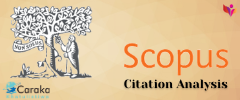Development of Problem-Based Comic Book as Learning Media for Improving Primary School Students’ Critical Thinking Ability
Abstract
This research is motivated by the lack of teachers' ability to use media related to the students environment as teaching materials to develop primary school students' critical thinking ability. The research aims at developing problem-based learning media (PBL) using comic book in order to improve students' critical thinking ability. The research employed a research and development design using the experimental research design with a one-group pretest-posttest design. The subjects of the research were 28 fourth-grade students in one of primary schools in Indramayu Regency. The research produced a product in the form of problem-based comic media developed based on the needs of teachers and students. The subject material in the comic book contained problems that occurred in the real environment within the students. Based on the validation tests carried out by material experts, media experts and practitioners, the results revealed that the product was included in the “Very Valid” category. While, the practicality test results revealed that the product was included in the “Very Practical”.
Keywords
Full Text:
PDFReferences
Afriliana. (2014). Pengembangan Bahan Ajar Bentuk Komik dan Lembar Kerja Siswa dengan Pendekatan Matematika Realistik untuk Meningkatkan Hasil Belajar Siswa Kelas III SDN 060843 Kecamatan Medan Barat (Master thesis, Universitas Negeri Medan, Medan, Indonesia). Retrieved from http://digilib.unimed.ac.id/id/eprint/4409
Black, B. (2008). Critical Thinking: A Definition and Taxonomy for Cambridge Assessment. Paper presented at 34th International Association of Educational Assessment Annual Conference, Cambridge.
Borg, W. R. & Gall, M. D. (1983). Educational Research an Introduction. New York: Longman
Cimer, A., Melih, T., & Mehmet, K. (2013). Critical Thinking Level of Biology Classroom Survey: Ctlobics. The Online Journal of New Horizons in Education, 3(1), 14-25.
Hughes, C. (2014). Theory of Knowledge Aims, Objectives and Assessment Criteria: An analysis of Critical Thinking Descriptors. Journal of Research in International Education, 13(1), 30-45. DOI: 10.1177/1475240914528084
Jonassen, D. H., & Liu, R. (2008). Problem-Based Learning. In J. M. Spector, J. G. van Merrienboer, M. D., Merrill, & M. Driscoll (Eds.), Handbook of Research on Educational Communications and Technology (3 ed., pp. 485-506). Mahwah, NJ: Erlbaum.
Pramadi, I., Suastra,, & Candiasa. (2013). Pengaruh Penggunaan Komik Berorientasi Kearifan Lokal Bali terhadap Motivasi Belajar dan Pemahaman Konsep Fisika. e-journal Program Pascasarjana Universitas Ganesha, 3(1), 1-10.
Prastowo, A. (2014). Pengembangan Bahan Ajar Materitik Tinjauan Teoritis dan Praktik. Jakarta: Kencana Prenada Media Group.
Sanaky, H. (2009). Media Pembelajaran. Yogyakarta: Safiria Insania Press.
Slameto. (2010). Belajar dan Faktor-Faktor yang Mempengaruhi. Jakarta: Rineka Cipta.
Sudjana, N. (2011). Penilaian Hasil Proses Belajar Mengajar. Bandung: Remaja Rosdakarya.
Sugiyono. (2013). Metode Penelitian Kuantitatif Kualitatif dan R&D. Bandung: Alfabeta.
Wood, K. C., Smith, H., & Grossniklaus, D. (2001). Piaget's Stages of Cognitive Development. In M. Orey (Ed.), Emerging perspectives on learning, teaching, and technology. from http://projects.coe.uga.edu/epltt/.
DOI: https://doi.org/10.53400/mimbar-sd.v6i3.22892
Refbacks
- There are currently no refbacks.
Copyright (c) 2019 Mimbar Sekolah Dasar

This work is licensed under a Creative Commons Attribution-ShareAlike 4.0 International License.
View Mimbar Sekolah Dasar Stats



.png)
